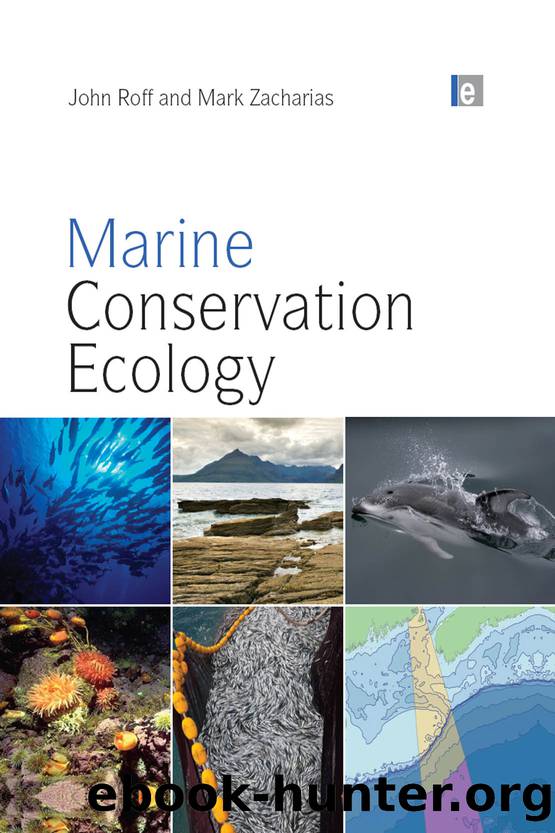Marine Conservation Ecology by Roff John;Zacharias Mark;Roff John;

Author:Roff, John;Zacharias, Mark;Roff, John;
Language: eng
Format: epub
Publisher: Taylor & Francis Group
Invasive species
The existence and transfer of non-indigenous (invasive) species (NIS) has been documented for many years (e.g. Ruiz et al, 1997). They are increasingly conspicuous in marine and estuarine habitats throughout the world, and the number, variety and effects of these species continue to accrue. Most of these NIS invasions result from anthropogenic dispersal. Although the relative importance of different dispersal mechanisms varies both spatially and temporally, the global movement of ballast water by ships appears to be the largest single vector for NIS transfer today, and many recent invasions have resulted from this mechanism of transfer. The rate of new invasions may have increased in recent decades, perhaps due to changes in ballast water transport. Estuaries have been especially common sites of invasions, accumulating from tens to hundreds of NIS per estuary including most major taxonomic and trophic groups. We now know of approximately 400 NIS along the Pacific, Atlantic and Gulf coasts of the US, and hundreds of marine and estuarine NIS are reported from other regions of the world. Although available information about invasions is limited to a few regions and likely underestimates the actual number of NIS invasions, there are apparent differences in the frequency of NIS among sites. Mechanisms responsible for observed patterns among sites likely include variation in supply of NIS, and perhaps variation in properties of recipient or donor communities, but the role of these mechanisms has not been tested. Although our present knowledge about the extent, patterns and mechanisms of marine invasions is still in its infancy, it is clear that NIS are a significant force of change in marine and especially estuarine communities globally. Taxonomically diverse NIS are having significant effects on many, if not most, estuaries that fundamentally alter population, community and ecosystem processes. The impacts of most NIS remain unknown, and the predictability of their direct and indirect effects remains uncertain. Nonetheless, based upon the documented extent of NIS invasions and scope of their effects, studies of marine communities that do not include NIS must be considered incomplete. Many of these species may be closely related to indigenous species, may act as cryptic species, and may only be distinguished by genetic analyses.
Download
This site does not store any files on its server. We only index and link to content provided by other sites. Please contact the content providers to delete copyright contents if any and email us, we'll remove relevant links or contents immediately.
Sapiens: A Brief History of Humankind by Yuval Noah Harari(13986)
The Tidewater Tales by John Barth(12391)
Mastermind: How to Think Like Sherlock Holmes by Maria Konnikova(6936)
Do No Harm Stories of Life, Death and Brain Surgery by Henry Marsh(6683)
The Thirst by Nesbo Jo(6435)
Why We Sleep: Unlocking the Power of Sleep and Dreams by Matthew Walker(6352)
Life 3.0: Being Human in the Age of Artificial Intelligence by Tegmark Max(5184)
Sapiens by Yuval Noah Harari(5120)
The Longevity Diet by Valter Longo(4856)
The Body: A Guide for Occupants by Bill Bryson(4580)
The Rules Do Not Apply by Ariel Levy(4522)
The Immortal Life of Henrietta Lacks by Rebecca Skloot(4253)
Why We Sleep by Matthew Walker(4190)
Animal Frequency by Melissa Alvarez(4148)
Yoga Anatomy by Kaminoff Leslie(4100)
The Hacking of the American Mind by Robert H. Lustig(4082)
All Creatures Great and Small by James Herriot(3982)
Barron's AP Biology by Goldberg M.S. Deborah T(3943)
Double Down (Diary of a Wimpy Kid Book 11) by Jeff Kinney(3923)
